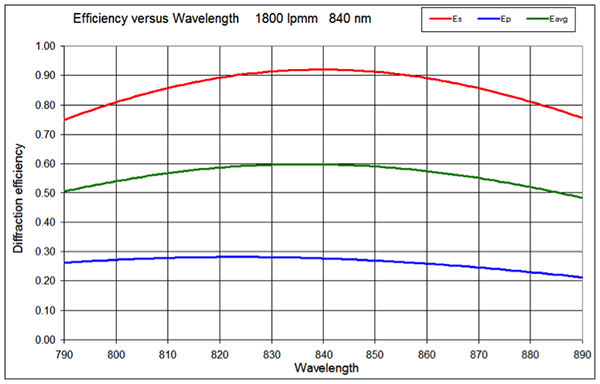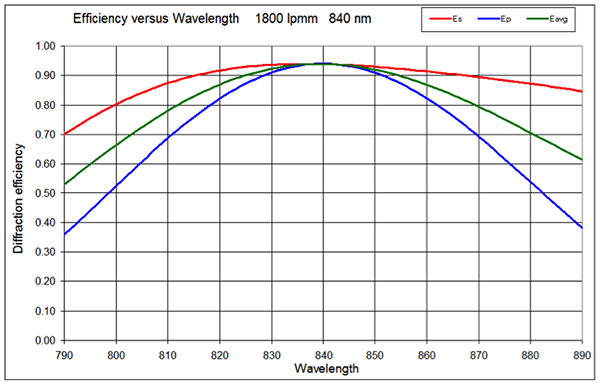When a grating design exceed a 36° for the angle of incidence (AOI) and angle of diffraction (AOD), P polarized light drops significantly with a standard volume phase grating. (Fig 1)

Fig 1 Standard volume phase grating at 1800 l/mm
Lee Dickson’s work with the holographic barcode scanner helped him to develop a model were S and P polarized light would peak together at these higher angles. This is achieved by making a thick grating with the correct index modulation. Lee patented this concept so we call it a “Dickson grating”. Fig 2

Fig 2 Dickson grating at 1800 l/mm
A Dickson grating has a high peak efficiency but a narrow bandwidth. If the application requires the use of a wider bandwidth than an HD grating is recommended. It has a lower peak efficiency but a wider and flatter efficiency curve.


